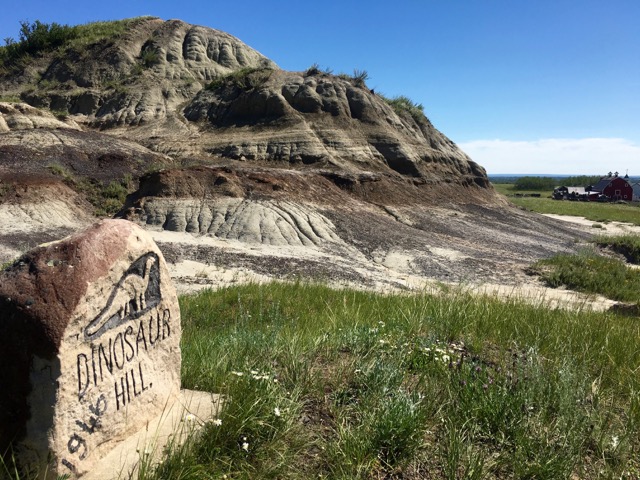Museum
About Kleskun Hills Museum
Nestled against scenic Kleskun Hills, next to the historic Edson Trail, sits delightful Kleskun Hill Museum. Step back in time from the early 1900’s to the mid 1950’s and tour our open area displays of farm machinery and memorabilia as well as nine restored, original buildings from the area. These include East Kleskun School and Teacherage (complete with original brass school bell) as well as two homestead houses, a store, barn, blacksmith shop, church and information cabin. A walk through the park will take you to a burial ground, evidence of one of the last territorial disputes between the Beaver and Cree Tribes.
Operated by the Museum Society – keep up to date with their facebook page Kleskun Hill Museum.
Inquires Email – office@kleskunhillmuseum.ca
Campground
Kleskun Hill Park is a 65-hectare natural area that offers opportunities to examine the many species of plants in the area and protects one of the largest pieces of native grassland remaining in the Grande Prairie Region. There are more than 160 flowering plants including the cactus. The rolling hills rise 100 meters above the plains in this area and the eroded remnants of a prehistoric river delta look like a miniature version of the badlands of Drumheller, Alberta.
The Kleskun Hills were first created over 70 million years ago from the accumulation of sand, volcanic ash and clay. Over time the layers hardened forming shale, coal and sandstone known as the Wapiti Formation. The retreat of the Ice Age carved out the hills and the wind and rain polished the hills. Here cactus grow in the arid, desert-like conditions where layers of rock and sediment from prehistoric lakes and seas are visible in the exposed hills.
The walking trails exploring the hills offer scenic vistas and opportunities for pleasant nature walks to examine the many species of prairie and badlands plants that are near their northern limits, including prickly pear cactus. Grassland birds include vesper sparrow, upland sandpiper and western meadowlark. On the far end is a First Nation Burial Ground for the Beaver and Cree People.
A Heritage Village is located at the entrance of the park operated by the museum society. A collection of many original buildings of the area can be viewed including the original East Kleskun School, barn and out-buildings, first post office and the Roman Catholic Church built in 1947.
For rates, amenities, and more information, visit www.countygp.ab.ca.

